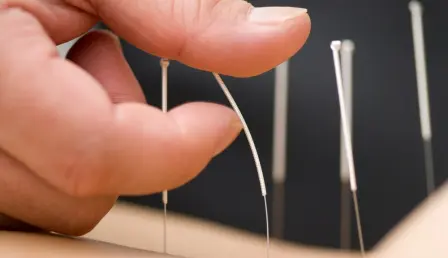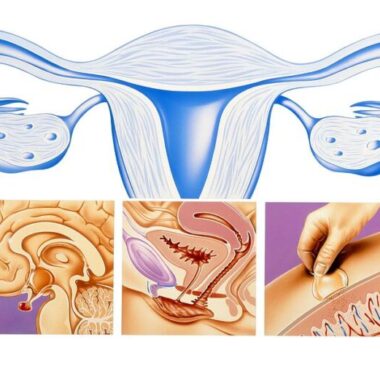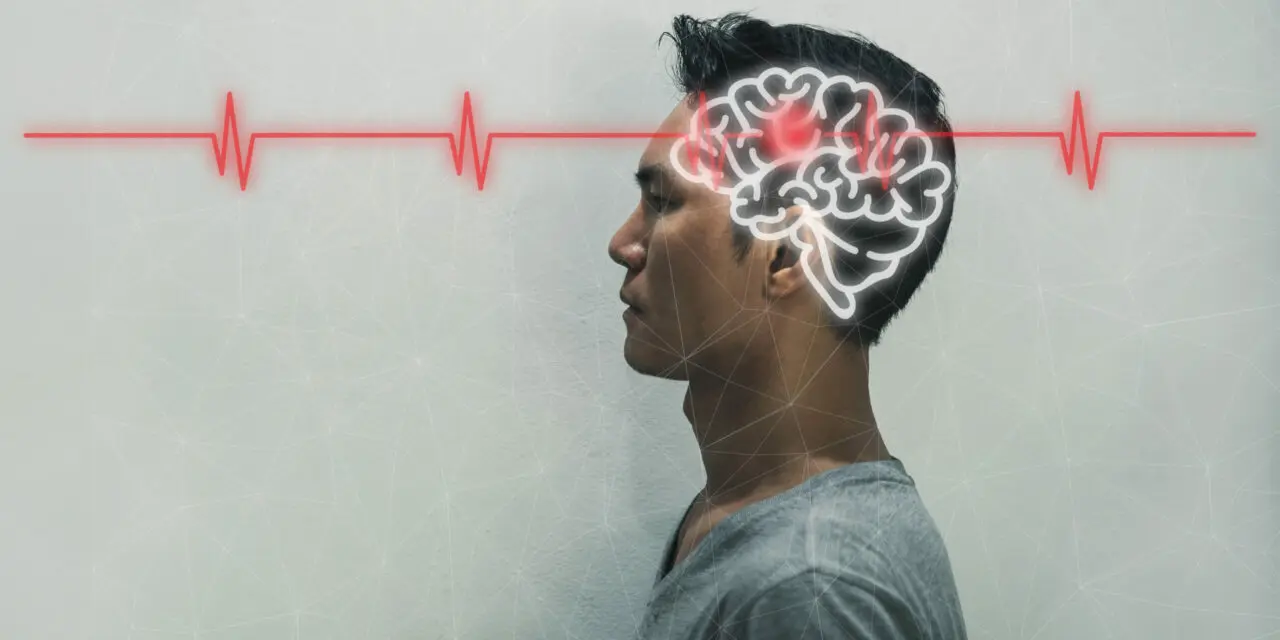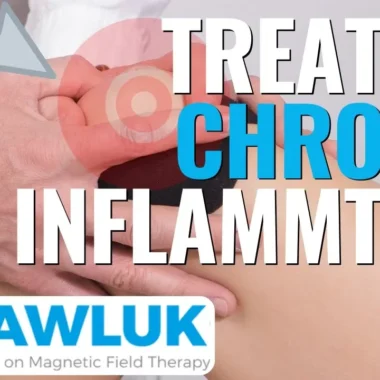ACUPUNCTURE
Table of Contents

Pain relief is a very frustrating goal of both individuals and physicians. More than 100 million Americans suffer from chronic pain. There are many health disciplines devoted to helping people with their pain problems. Every approach has its merits, but it is rare for any single approach to be a cure. Pain becomes chronic only because there are no satisfactory curative treatments. Relief is often obtained, but usually only temporarily. Sometimes there is a permanent reduction in the pain but not elimination of the pain. One of the reasons for this frustration is the tremendously variable number of causes of chronic pain.
Almost always, the constant component of the cause of pain is inflammation. The current options for chronic pain management include drugs, procedures, injections, surgery, manipulation, massage, various energy modalities, and acupuncture. Since I first became a physician, with most of my early emphasis in management, I recommended drugs, procedures, injections and surgery. The drugs mostly “numb and dumb” the body, often with the risk of addictions and major side effects. Procedures sometimes can be miraculous but often leave people with more problems than they started with. Unfortunately, it is very difficult to predict who is going to have problems following their procedures or surgeries.
DR. PAWLUK’S EXPERIENCE
Many of the patients I see have already attempted these approaches to managing their chronic pain. Along the way, some have had spectacular results, but sadly, the vast majority do not. That means these treatment “failures” are left with not only the consequences of the treatments that they had already tried, but also still left with significant pain likely to remain for the rest of their lives. I had only been practicing medicine for about 20 years at this point.
Too soon old, too late smart! I was really frustrated, because my goal was to be able to help as many people as possible, as much as possible, and cause the least possible harm with the treatment/s. So I realized I had to find alternatives outside the traditional medical toolbox. I started my career with magnetic therapies by learning acupuncture through a UCLA program for physicians. I did that because I was looking for alternatives to managing pain and other chronic and challenging health conditions that did not involve approaches that were available at that time.
These approaches typically included medications (many addicting), procedures and surgeries (with their frequent complications and failures) and less frequently physical therapy. After several patients had to be admitted to the hospital with gastrointestinal bleeding given the aspirin or ibuprofen I prescribed (which all my peers and specialists used, and many continue to prescribe) I decided that there had to be other approaches that were safer and still effective for managing these many frustrating problems. I looked to other cultures, including the Chinese. I deduced that you cannot fool so many millions of people in Oriental cultures, who relied on acupuncture for their primary sources of care, for centuries, without there being some value to these approaches. However, it meant stepping outside the socially-accepted and controlled medical systems. I would have to become bold and learn a whole different way of thinking about health and human function.
Unfortunately, my timing was not great relative to what was going on around me in society at the time. Acupuncture was still very early in its adoption process in the Americas. People were very afraid and intolerant of being needled. So, I started looking for alternatives to having to use acupuncture needles. I discovered that magnets have been used for decades in the Orient to stimulate acupuncture points.
FROM NEEDLES TO MAGNETS
I started experimenting with tiny, powerful static magnets, placed on acupuncture points. I discovered that not all acupuncture points could be easily accessed by the magnets because the magnets produced a very shallow magnetic field. However, I did learn that the magnets would stimulate certain superficial acupuncture points, as well as treating the local tissue around the magnet. I was curious on how magnets could possibly do these functions. So, I began researching all of the writings I could find on the subject of magnets and what they did to the body. In my search I discovered a large amount of information, though it was unfortunately mostly written in Eastern European and Asian languages. I was frustrated.
As fortune would have it, I met a doctor from the Czech Republic who had translated much of the Eastern European literature on magnetic therapies to that time, already over 30 years of experience. He and I collaborated to produce a book, Magnetic Therapy in Eastern Europe: A Review of 30 Years of Research. The research from this book propelled me into using magnetic fields for a vast array of medical conditions, and learning all about the use of pulsed electromagnetic fields in my practice, for myself and for friends, pets and family.
MOVING FROM STATIC TO PULSED MAGNETIC FIELDS
The rest as they say is history. I had discovered that pulsed electromagnetic fields can stimulate acupuncture points and meridians as well as all the tissues in the path of the electromagnetic field. Therefore, PEMFs were more efficiently effective than just acupuncture alone. Certainly, acupuncture can be more effective, particularly with electrical stimulation, on specific points and for specific problems. PEMF stimulation of an acupuncture point may or may not always be as strong as stimulation with an acupuncture needle. However, because PEMF devices are now available commercially and can be purchased for personal use, they can be used in the home setting on a completely flexible basis, accomplishing some of the goals of acupuncture but, in addition to that, have all the benefits of individual cellular stimulation.
Descriptions of these other benefits can be found in our Education section.
Early on in my use of magnets I did some research with a doctor who could do nerve conduction studies. We discovered that magnets placed over acupuncture points did indeed have an impact on the flow of energy up the acupuncture Meridian. At one point, I actually discovered in Dr. Robert Becker’s book The Body Electric, from research done in his lab, that acupuncture points and meridians are part of a DC current system. If you know anything about magnetic fields and electricity, you will know that they interact with each other. That means that magnets will interact with the acupuncture points and meridians from an electrical perspective.
So, one does not have to break the skin with a needle to produce an acupuncture like effect. One may simply be able to use magnets to stimulate the acupuncture points and meridians. In addition to using needles and magnets to stimulate acupuncture points, these points may also be stimulated by pressure, heat, electrical stimulation, laser, ice, and friction. In fact, electrostimulation of acupuncture points is also commonly used in North America. Actually, my UCLA training emphasized the use of electrically stimulated needles to perform acupuncture.
CONTINUING RESEARCH
While I have known for 2 decades about static magnets and acupuncture point stimulation, I assumed it to be also true for pulsed electromagnetic fields. Now we have evidence from a study published recently, indicating that PEMFs are also able to stimulate acupuncture points and therefore the associated meridian/s. The aim of that study was to find a non-invasive optimal alternative method for manual acupuncture. They investigated the therapeutic effect on muscle fatigue after strenuous knee exercise by two forms of stimulation. The stimulation included both transcutaneous electrical stimulation (TEAS) and PEMFs, using a 2Hz biphasic rectangular wave pulse. The peak magnetic flux was 30.92mT (309.2gauss) at 2 Hz. An electromyogram (EMG) and maximal voluntary contraction (MVC) were measured.
Peak muscle torque recovery in both the non-stimulation and TEAS groups did not recover to the pre-exercise level during the recovery period. In contrast, the PEMF group recovered by 14 minutes. The results of this study demonstrated that PEMFs were better than TEAS as a non-invasive method to replace manual acupuncture, as far muscle recovery after intense exercise is concerned.1 The PEMF signal chosen for the study was of moderate intensity and applied locally, restricted to an acupuncture point. This study establishes that PEMFs are yet another modality that can be used to stimulate acupuncture points, whether by self treatment or treatment by Accupuncturists or other therapists. However, as I mentioned earlier, in my practice I don’t limit my use of pulsed magnetic fields specifically to acupuncture points. PEMFs are a general body therapeutic modality.
Additionally, pulsed magnetic fields will get all the acupuncture points and meridians in the area of the magnetic treatment. One of the challenges of doing acupuncture is selecting the right points for the particular needs of the individual at the time. For that approach, seeing an experienced acupuncturist of course would be necessary. For the individual choosing to do PEMF therapies at home, it can be accepted that the PEMFs will not only stimulate the acupuncture points and meridians in the magnetic field but will also stimulate the local cells. Thus, PEMF therapy accomplishes several goals simultaneously. PEMF therapy could help to decrease the need for multiple and repetitive, potentially expensive, and certainly inconvenient, acupuncture treatments, by allowing frequent and regular use of PEMFs in the home or personal setting.
RESOURCES
- Acupunct Electrother Res. 2012;37(4):247-61. Comparison of 2 methods of non-invasive treatment between transcutaneous electrical stimulation and pulsed electromagnetic field stimulation as replacement of invasive manual acupuncture. Kim SB, Kim JY, et al.









